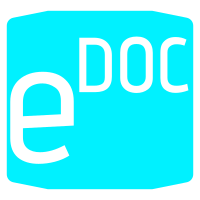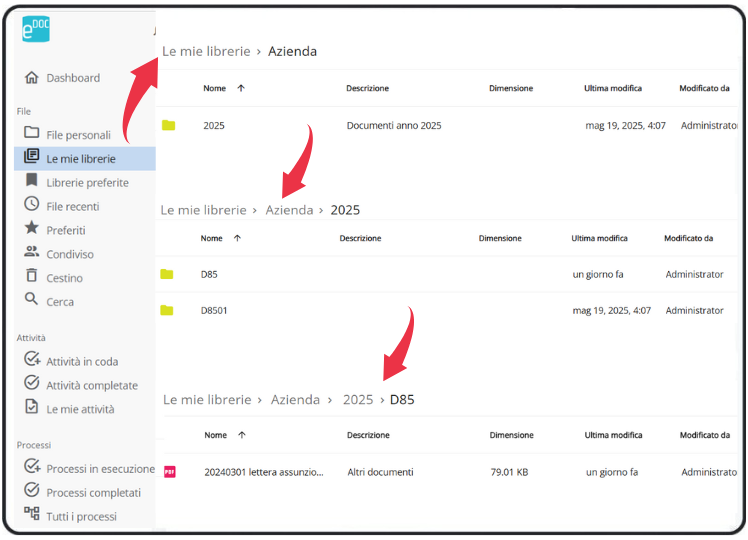Digital Document Management
eDOC is aimed at companies, organizations, and public administrations that wish to optimize the management of their document resources, effectively addressing the growing volume of digital data and documents.






With eDOC, you can create customized workflows to optimize business processes. From document review to the approval of complex activities, everything becomes automated and trackable in real time. The platform allows you to assign targeted permissions to users or groups, ensuring that everyone can access only the resources relevant to their role—improving both organization and security.
Integration with existing company management software happens seamlessly: thanks to dedicated APIs, eDOC connects with ERP, CRM, and other business applications, centralizing data and simplifying operational management.
The advanced permission management system ensures that each user can view, modify, or manage only the areas they are authorized to access. This detailed configuration protects sensitive information, reducing the risk of errors and unauthorized access.
Reduction of storage and management costs.
Improvement of operational efficiency.
Increased security and access control.
Ease of document search and retrieval.
Compliance with current regulations.
Integrazione con altri sistemi aziendali.
Accessibilità da diversi dispositivi e luoghi
Alti standard di sicurezza e protezione dei dati.
Automazione dei flussi di lavoro.
Facilità di condivisione e collaborazione.
Funzionalità di conservazione a norma di legge.
In companies, the document management officer is the person who oversees digital document workflows, defines access policies, and ensures regulatory compliance. In public administrations, this role is mandatory and must be held by a professional with specific qualifications.
Security is ensured through:
Role-based access control.
Data encryption.
Audit trails to monitor activities.
Regular backups.
Compliance with privacy regulations.
Digital archiving refers to the organized storage of electronic documents to facilitate daily access and management.
Digital preservation, on the other hand, involves a set of activities aimed at ensuring the authenticity, integrity, readability, and retrievability of documents over the long term, often in compliance with specific regulations.
The choice should be based on:


